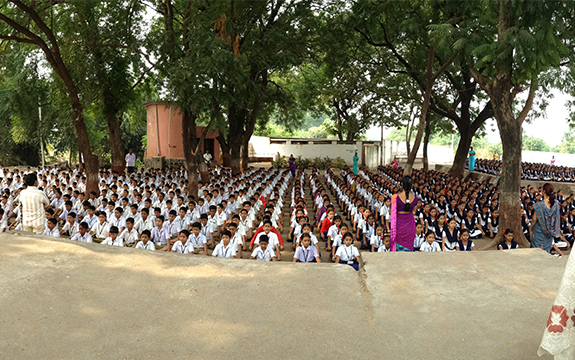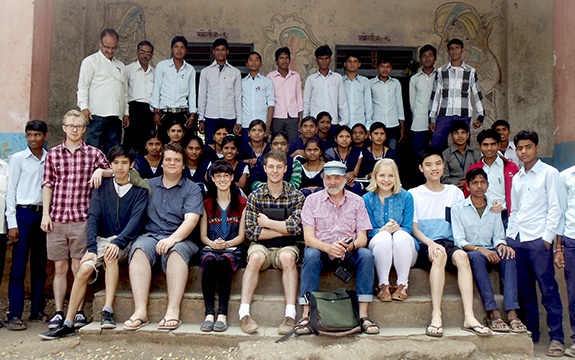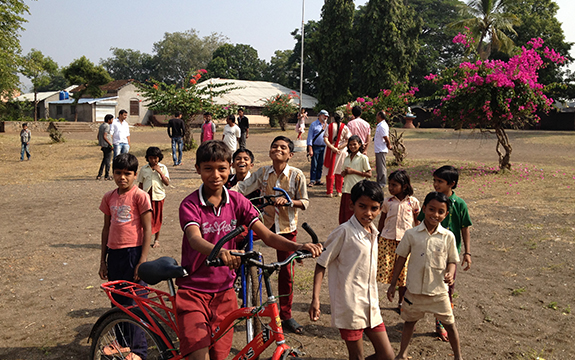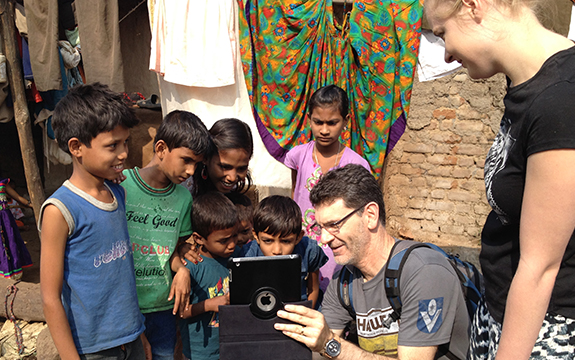IT students click with schools in India

In Summary
- IT for Social Impact India Project changes lives for the better
- Eleven IT students travel to India to help school children
- Expressions of interest for upcoming trips close soon
Swinburne University of Technology students are moving beyond the classroom and applying their IT and business skills to help remote tribal communities in India connect with the rest of the world.
The IT for Social Impact India Project links students with community groups in Mumbai and villages including Pal and Jamnya to explore ways of providing positive social impact through technology.
Passionate about making a positive change, lecturer in information systems, Dr Jason Sargent, has accompanied students on two trips to India since the program started in 2014.
“I’ve had the privilege of seeing first-hand how this trip changes our students. They are making a difference and in the end they come away with a profound learning experience,” says Dr Sargent.

The tours are funded through the New Colombo Plan (NCP) and made possible through a partnership with CERES Global, a not-for-profit organisation based in Melbourne that offers international exchanges, as well as local non-government organisations in India.
Over the summer, 11 students travelled to India on the 14-day short-term mobility project. Their first destination was Mumbai, where they visited Apne Aap, an anti-trafficking organisation that serves the women and children of Kamathipura, one of the largest and oldest red light areas in Asia.

“Mumbai was a slap in the face with traffic coming from every direction possible,” says Business Information Systems/Business student, Ms Sophie Ruddick.
“When we arrived at Apne Aap, the centre only had five barely-working computers to share between over 30 kids. We ran workshops with the kids and repaired the computers. They loved it — the smiles on their faces were priceless.”
Each day in the villages, the students diagnosed and repaired old, poorly maintained computers and built computer networks. They worked with small groups of kids at the schools, giving hands-on workshops using laptops, tablets and smartphones that they brought with them from Australia.
The students had the opportunity to fly a drone, capturing images of the villages’ landscapes and also trained teachers on the use of different technologies.
Being able to apply the skills learnt in the classroom was rewarding on so many levels.

“We were well looked after by the elders and had so much fun with the school children,” says Ms Ruddick.
“I loved playing cricket at lunchtime with the kids at Jamnya. I was determined to get some of the girls involved and show them it's not all about the boys.”
Jamnya, the remotest of the villages, has 300-400 students, two computers and no Internet, making it impossible for the teachers to deliver the ICT curriculum.
Coincidentally, the Swinburne Global Tradies project has begun building sustainable earth-brick classrooms and teacher accommodation in Jamnya, paving the way for the IT students to carry out their work.
The IT for Social Impact India team and CERES Global have a shared dream of a ‘Connected Jamnya’.

“We strongly believe we can make the dream a reality within the next three years with the ongoing funding support of the India project by NCP, but we are going to need help with infrastructure costs and welcome anyone wanting to join our efforts,” said Dr Sargent.
There are two separate social impact study tours going to India and Timor. Resgister you interest now:
I loved playing cricket at lunchtime with the kids at Jamnya. I was determined to get some of the girls involved and show them it's not all about the boys.

